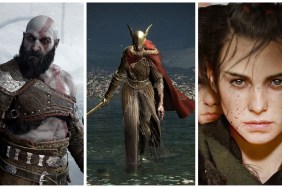Lost in space.
Once upon a time, a cut-scene was considered a mind-blowing leap of technology. Not only did the cut-scene feature fancy graphics and sound, but it propelled the increasing importance of storytelling in games to new heights. It came to be that an RPG without cool cut-scenes was an RPG no one would care to play.
But what happens…
-
Improved combat
-
New character designs
-
Continues to flesh out the immense plot
-
Through too many long cut-scenes
-
Pacing problems
-
Lots of cliches
-
More anime than game










